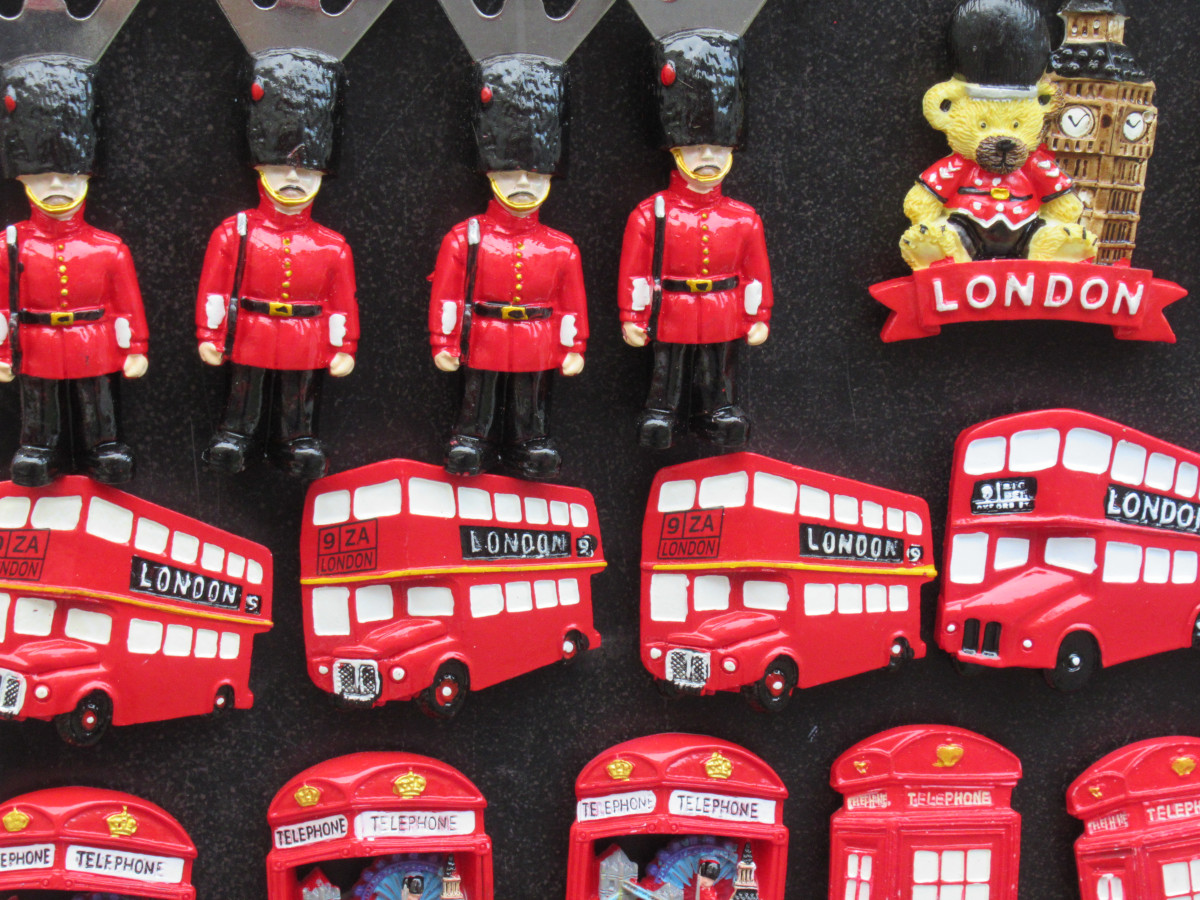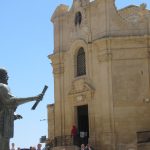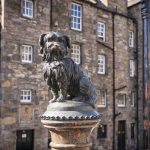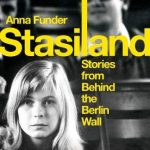This post starts with the most famous London shops and shopping streets, then covers other kinds of shopping visitors to the city are likely to want to search out: historical venues which offer a little retail therapy, the best bookshops and the cream of London’s markets, whether you seek a foodie haven, an array of vintage goods or just somewhere to browse in search of a vibrant atmosphere and maybe a bargain or two.
famous london shops
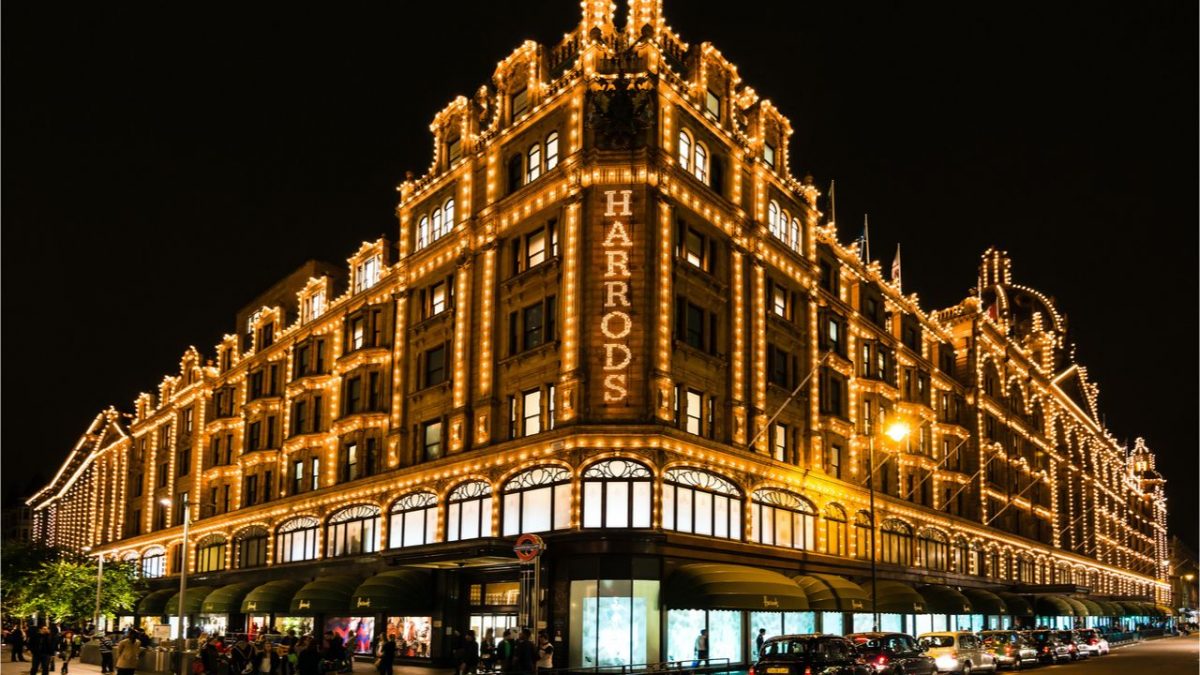
Harrods and Harvey Nichols in Knightsbridge, Selfridges and John Lewis in Oxford Street, Liberty in Regent Street, Fortnum and Mason in Piccadilly ….. London’s exclusive shops have a global reputation. Visiting any one can be an interesting free excursion, or a chance to splurge. There’s a weight of history behind each of them, much of which is told on the podcast, but here, as an appetiser, are a few details.
Harrods began as a grocery store in the East End in the 1830s, relocating to Knightsbridge a decade later. When it burned down in 1883, it was built back, bigger and better and the world’s first escalator was installed there in 1898, so frightening some customers that the staff offered them free brandy. Today it has 90,000 square metres of space over 5 floors, lavishly decorated with statues, fountains and extravagant themes, such as the Egyptian hall which dates from when the shop was owned by Mohammed Al Fayed (1984-2010). The Harrods motto is “Everything for everyone, everywhere”. Even making the smallest purchase means you can have one of the famous green and gold bags, a souvenir in itself!
The story of Selfridges opening day on March 15th, 1909 is told on the podcast, from the moment when, at 9.00 am precisely, a bugler blew a fanfare on the first-floor balcony and the looped curtains concealing the 21 extravagant window displays were swept back for an amazed public to admire.
london’s well known shopping streets
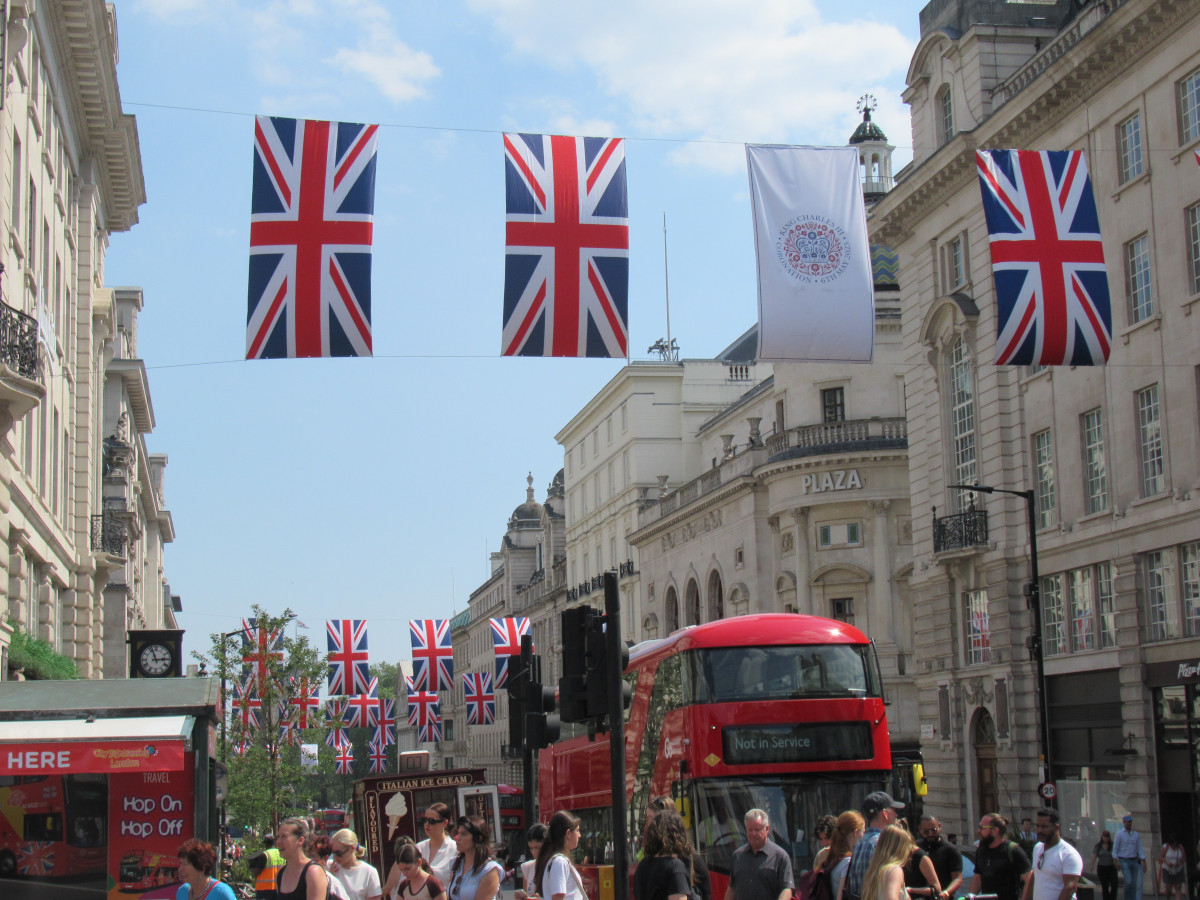
Oxford Street is London’s busiest shopping street, once described as the place to ‘admire people going back and forth supporting capitalism’. Nearby Regent Street, home of Liberty and the Hamleys toyshop, built wide enough to accommodate horses and carriages in the 18th century and flanked by elegant regency architecture, has a more exclusive feel. Mayfair and Bond Street are also good for luxury goods and celeb spotting.
More specialist streets include Jermyn Street, home to the sort of gentleman’s outfitters who kit out royalty – Turnbull and Asser for shirts and John Lobb, bootmaker, where it’s said they still have the original lasts used for bespoke shoes made for Queen Victoria and Frank Sinatra. There’s also Churches for shoes and Benson and Clegg for blazers and in nearby Savile Row, where the tuxedo may have been first made, you can have a tailor-made suit made after three fittings. They also offer a monogramming service for ‘up to four initials’ on ‘men’s shirts, silk ties, dressing gowns, chinos and pyjamas.’
more london shopping areas
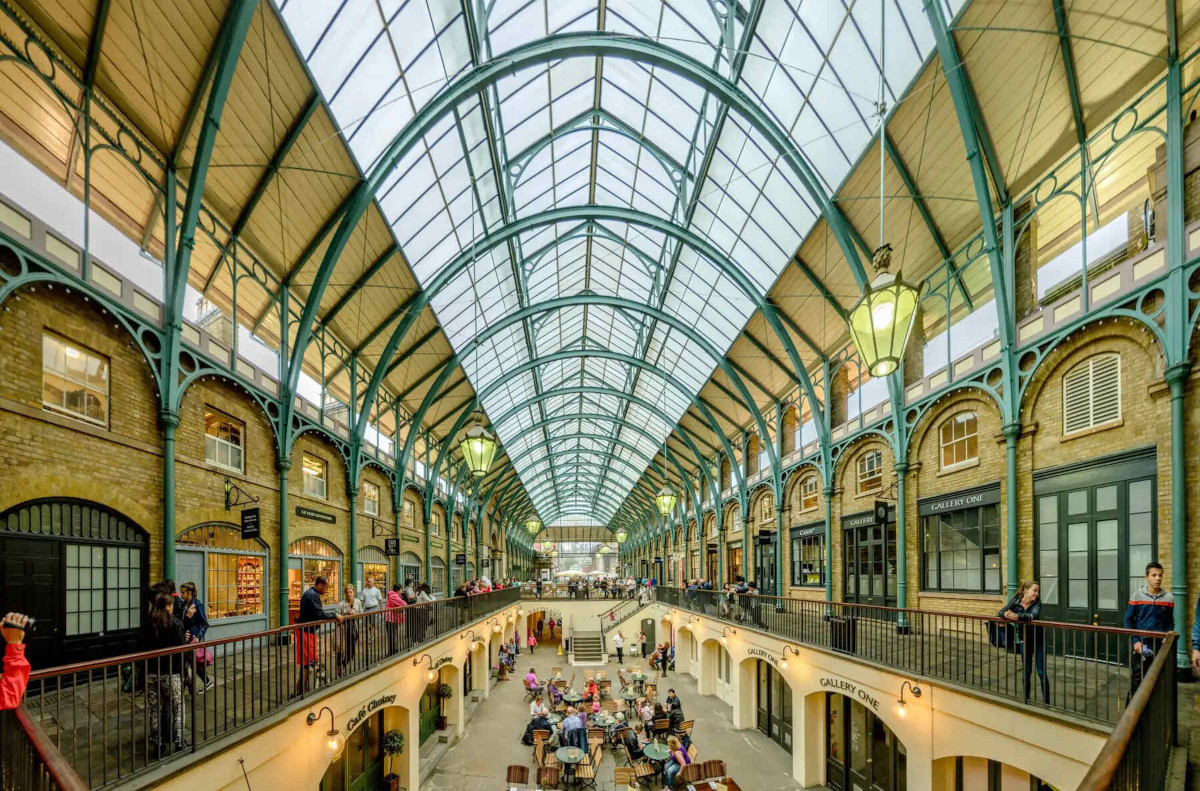

Covent Garden, just near the Royal Opera House, is a lively spot for buskers – often talented music students – and the piazza, plus the little courtyards and quirky side streets off it, are full of shops, cafes, bars and restaurants. Carnaby Street and it environs has a long history of flamboyant fashion – mot notably it was the centre of 60s Swinging London – and now offers a mix of heritage brands and new designers. The King’s Road, Chelsea, is another trendy spot, home to Vivienne Westwood (no 430), lots more fashion shops, the Saatchi Gallery and the delightful Peggy Porschen where the sugary pink exterior matches the goods inside where you can celebrate ‘the joy of cake.’
3 Historic Shopping Venues
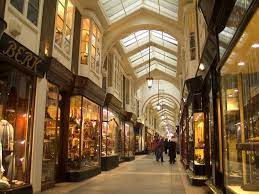
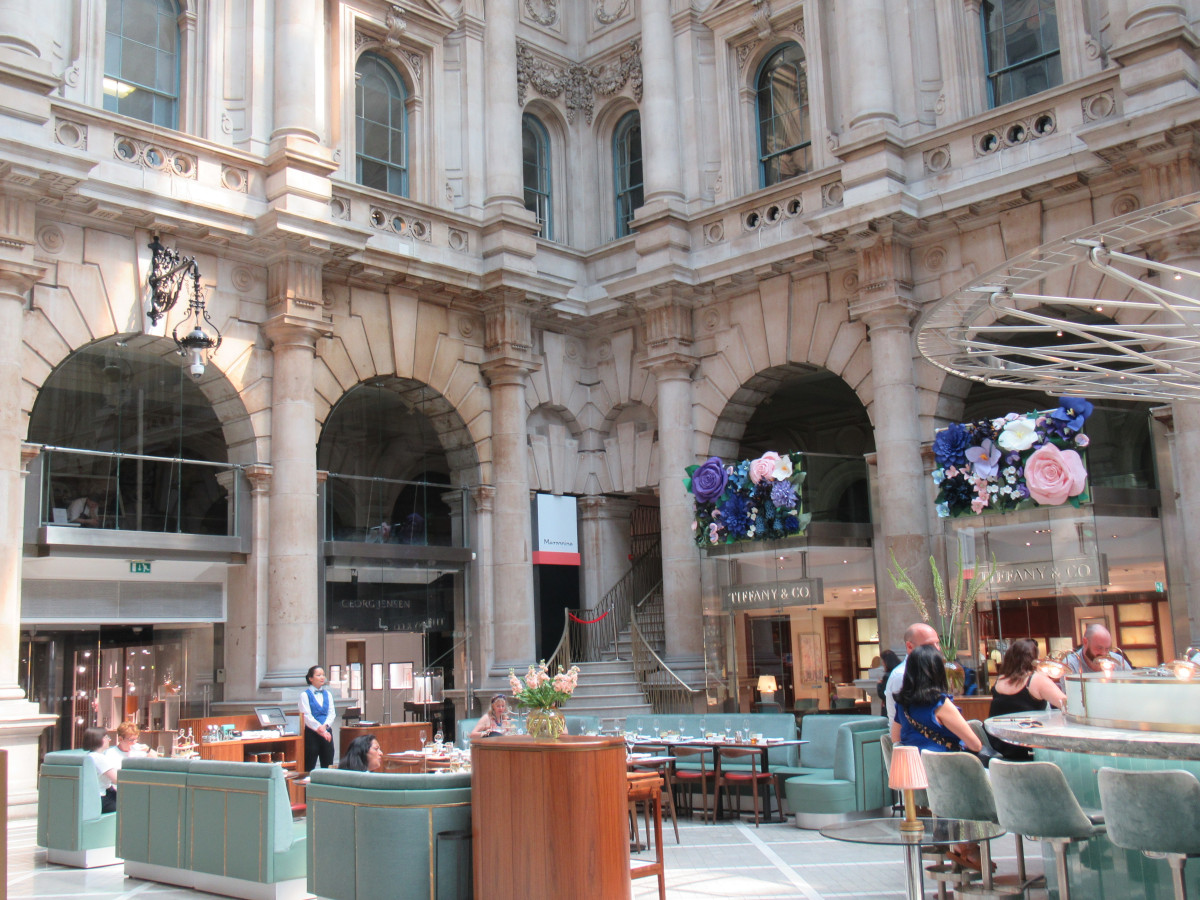
Burlington Arcade, opened in 1819, was built originally by Lord George Cavendish as somewhere safe for his wife and other ‘genteel folk’ to shop. Today it’s still a beautiful arcade and has its own doormen, wearing similar regency-style uniforms to the original ‘Beadles’ and ensuring decorum: no whistling, running, riding a bicycle or ‘behaving boisterously’. The shops along its length sell luxury goods, such as prestigious jewellery, leather goods, expensive perfumes and – in keeping with its Parisian arcade atmosphere – macarons.
The first Royal Exchange was a centre of commerce for the City of London, founded in the 16th century and opened by Elizabeth I. Burned down in the Great Fire of London, the rebuilt version was destroyed by fire again in 1838 and then Queen Victoria opened the one which stands today in 1844. It’s a beautiful structure, set around a central courtyard with stunning ornamental ironwork and sculptures. Today, it’s the home of high-end shops and restaurants. Maybe pop into Fortnum’s Bar and Restaurant, where a small treat such as ‘Three Oysters and a Glass of Fortnum’s Blanc de Blanc Grand Cru’ will be relatively affordable.
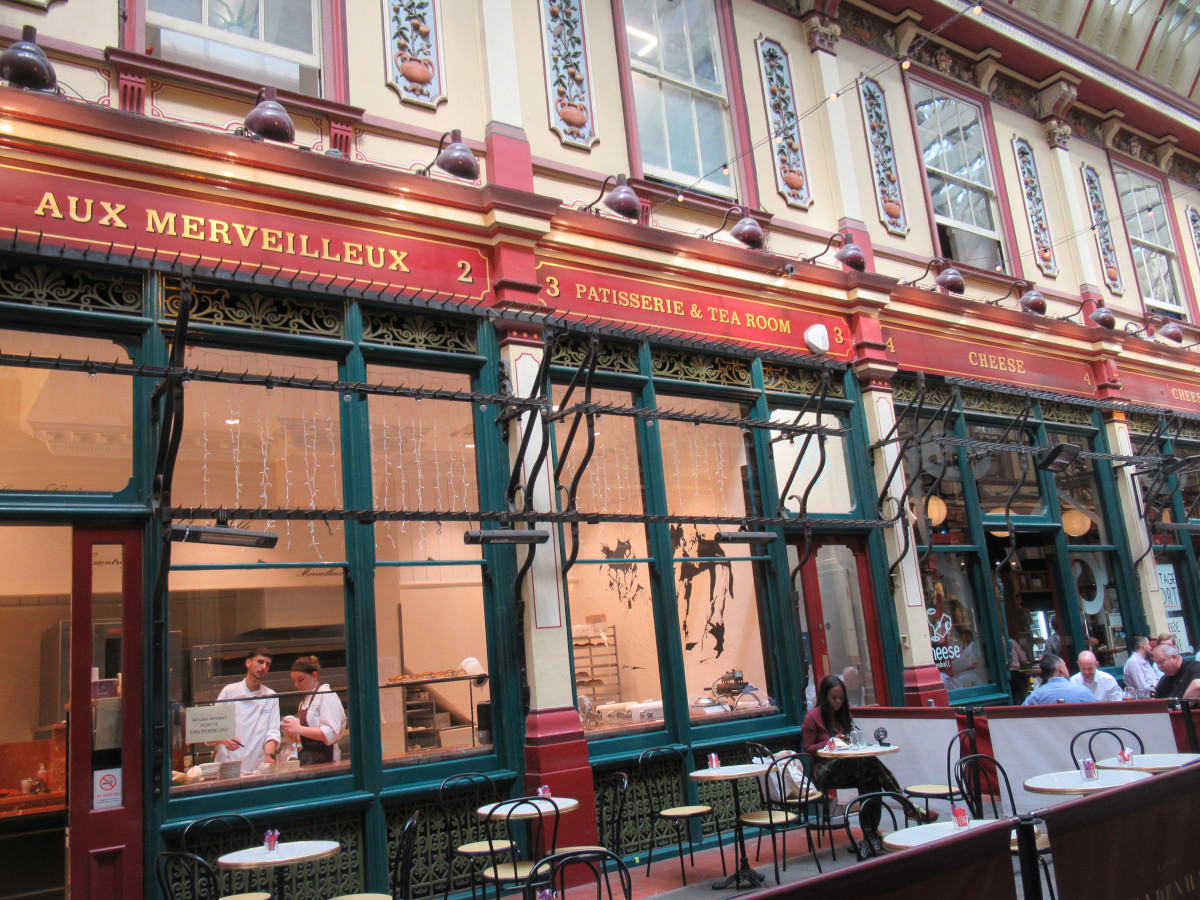

Leadenhall Market is even older, dating back to the 14th century. It was originally a meat and poultry market – look out for the wrought iron hooks on which meat carcases used to hang – but was rebuilt by the Victorians as the airy wrought iron and glass structure you see there today. Expect a Dickensian atmosphere, no shortage of pubs and wine bars, plus a range of shops, both upmarket and more ordinary.
london’s best bookshops
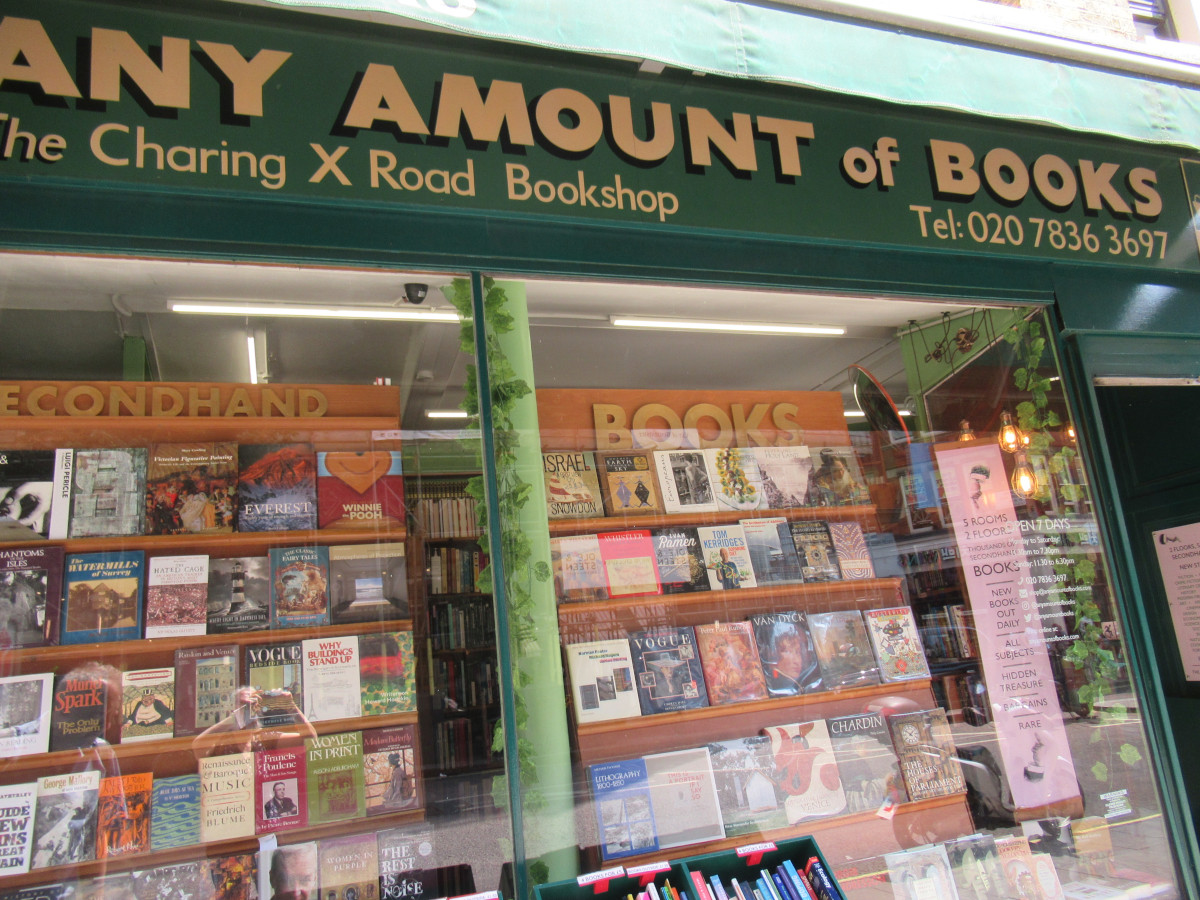
Charing Cross Road is the home of a number of good second-hand bookshops and also of Foyles, founded in 1903 and once the world’s largest bookshop. Once it was known for its ramshackle charm, (described on the podcast) but today it has been spruced up.
Hatchards in Piccadilly, established in 1797, is the UK’s oldest bookshop. George III and Queen Charlotte were keen customers and it is still the ‘Official Bookseller to the Royal Household’, worth a visit to admire its elegant interior.

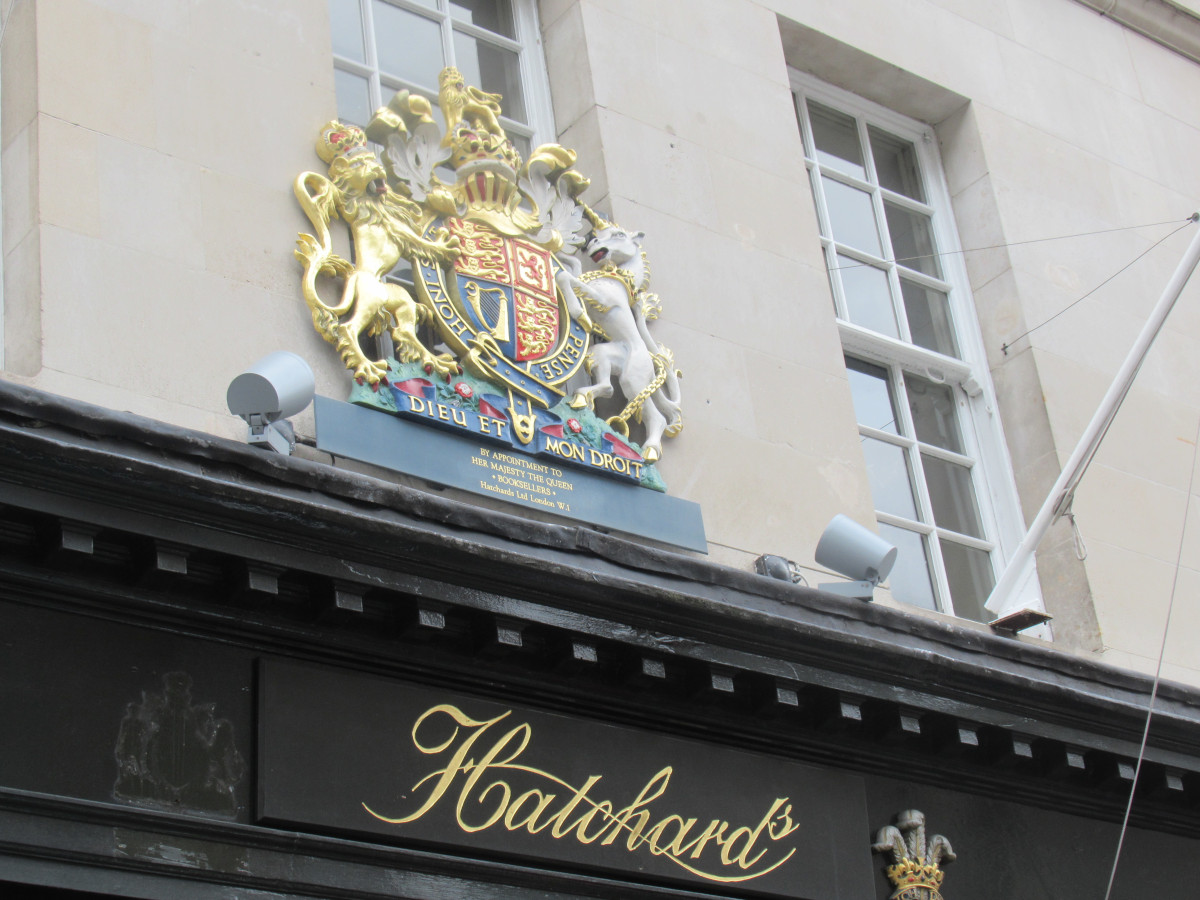
Three more worthy institutions are: the London Review Bookshop, near the British Museum, which publishes its own literary magazine (the fortnightly London Review of Books); Stanfords Bookshop in Covent Garden, ‘The World’s Biggest and Best Map and Travel Bookshop’ and the Notting Hill Bookshop, which, since its starring role in that film, is not just an excellent bookshop, but also a tourist venue attracting thousands of fans from all over the world.
london’s top markets
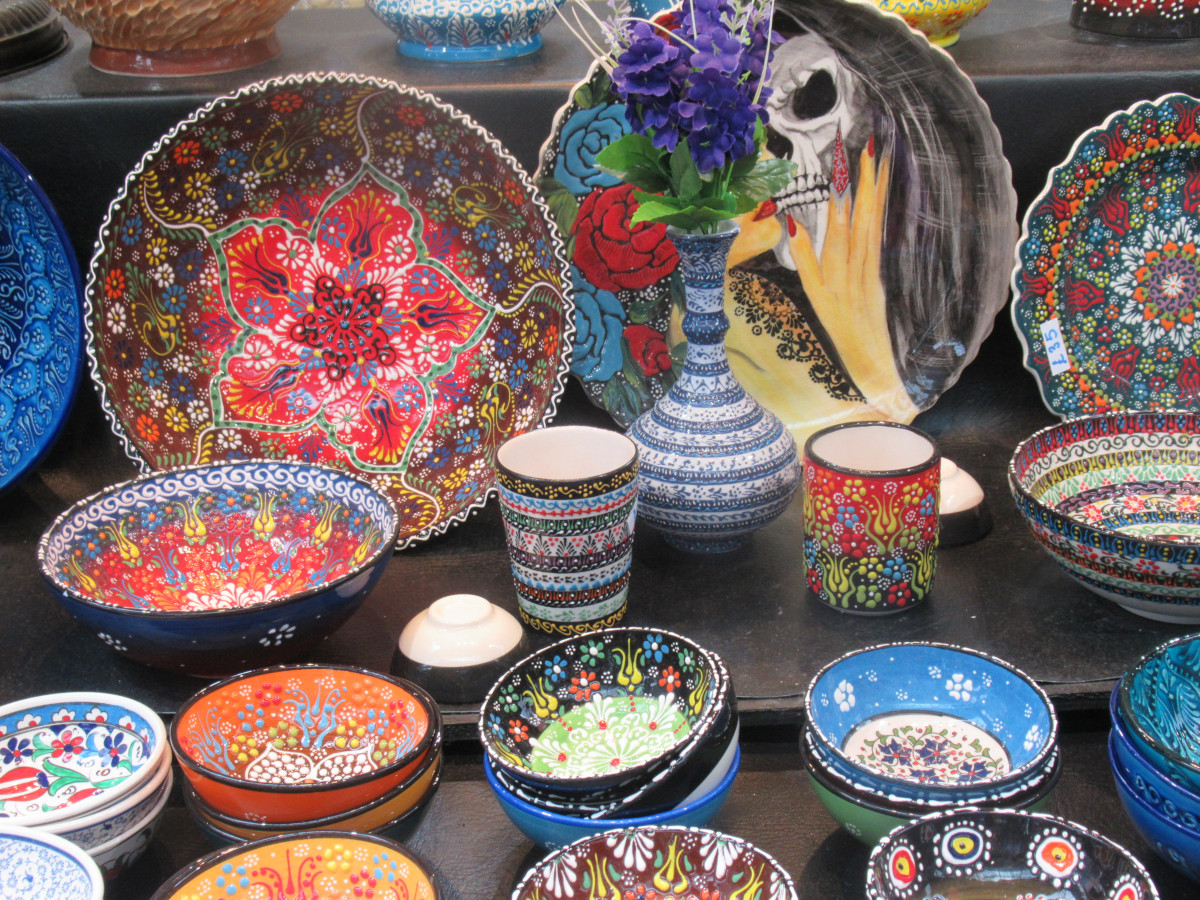
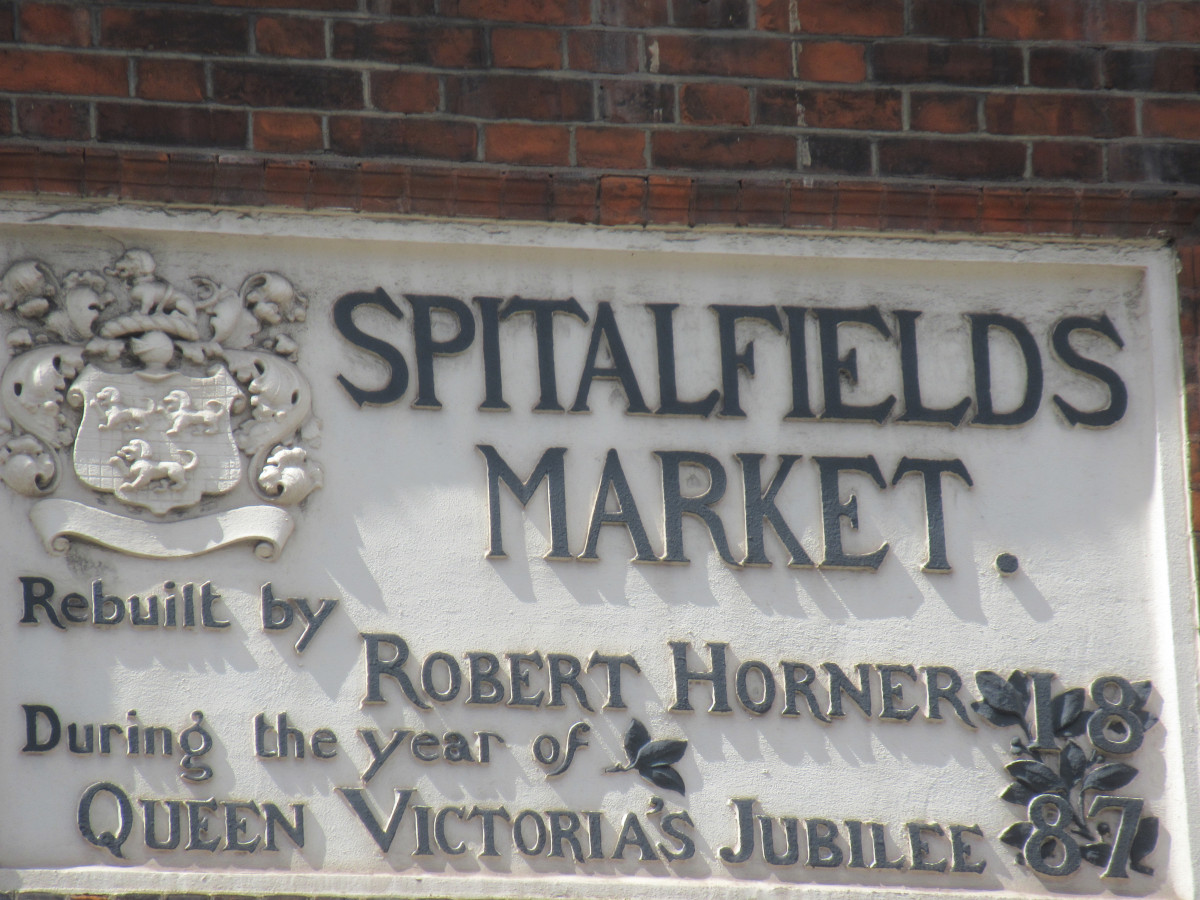
Camden Market is actually several markets in one, centred around Regent’s Canal and comprising over 1000 independent shops, stalls, bars and cafes. Seek out anything from fashion and jewellery to antiques, vintage leather and souvenirs. Best – and busiest – at the weekends.
Portobello Road Market in Notting Hill has stall after stall of bric-a-brac and antiques, not to mention foodie treats, vintage clothes and a thriving second hand section. It’s been described as ‘a mile of hustle, haggle, colour and energy’. Best visited in the mornings.
Spitalfields Market originated in the 17th century and today it’s a covered market in an old Victorian building in easy reach of Liverpool Street Station. Antiques are a specialism, but you’ll also find plenty of art, gifts and clothes by new young designers. Open every day, but best at weekends.

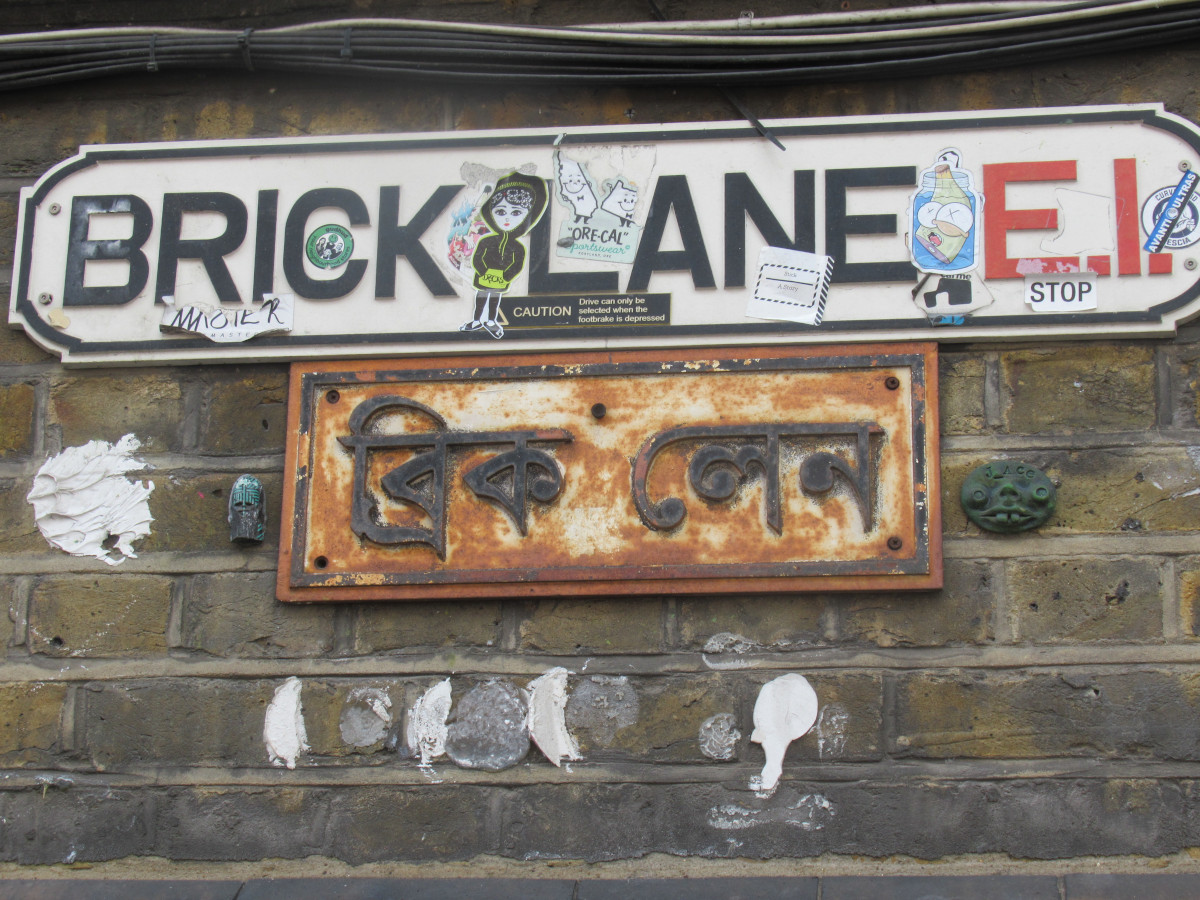
Brick Lane, once the old Jewish quarter and then Banglatown, hosts the Sunday Upmarket – fashion, art and food from around the world – which is held in the former Truman Brewery. The nearby weekend Backyard Market is the place to find clothes, accessories, art and jewellery from young designers. In the old stables, where the drayhorses were kept, is an array of cafes offering tastes from around the world.
If you’re just visiting London, you probably won’t be buying flowers, but visit the Columbia Road Flower Market anyway (Sundays only, 8.00-3.00) to see the colourful stalls and then to visit some of the many independent shops nearby.
2 excellent london food markets

Borough Market is tucked away under the railway bridge near London Bridge Station on a site where traders have been operating since the 12th century. It’s a foodie haven, equally perfect for food to go and food to cook later. Check the website for the full list of traders, but treats awaiting you include specialities from Emilia Romagna, Scottish smoked fish products, Singapore street food, Gujerati vegetarian specialities …… and on and on.
The Southbank Centre Food Market is open on Fridays and weekends and also offers a huge range. That might include crêpes and galettes, barbecue, burgers and seafood, curries from Mauritius and the Punjab, a Polish deli, Ethiopian coffee and cocktails from ‘Elephant Juice.’
Listen to the POdcast
Reading suggestions
Shopping in London by Christiane Igelle
London’s Markets by Andrew Kershman
An Opinionated Guide to London’s Bookshops by Sonya Barber and James Manning
links for this post
London’s Big Stores:
Harrods
Harvey Nichols
Selfridges
John Lewis
Liberty
Fortnum and Mason
Specialist Shops
Hamleys for toys
Turnbull and Asser for shirts
John Lobb for shoes
Churches for shoes
Benson and Clegg for blazer
Shopping Areas
Covent Garden
Burlington Arcade
The Royal Exchange
Leadenhall Market
Bookshops
Foyles
Hatchards
The London Review Bookshop
Stanfords Bookshop
The Notting Hill Bookshop
Markets
Camden Market
Portobello Road Market
Spitalfields Market
Brick Lane Market
Columbia Road Flower Market
Food Markets
Borough Market
The Southbank Centre Food Market
Previous episode Windsor and Eton
Next episode London Diarists and Travel Writers
Last Updated on July 11, 2024 by Marian Jones

